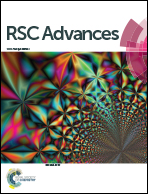Long term effects of substrate stiffness on the development of hMSC mechanical properties
Abstract
Human mesenchymal stem cells (hMSCs) are multipotent stem cells with promising potential in tissue engineering and cell therapy applications. The mechanical properties of hMSCs are associated with their behaviors, like adhesion and differentiation, and can be influenced by the mechanical properties of the substrates that they adhere to. The objective of this work is to investigate the effect of substrate stiffness and culture time on the elastic and viscoelastic properties of hMSCs. Particularly, polydimethylsiloxane (PDMS) substrates with different stiffness were prepared for long-term hMSC culture. Micropipette aspiration method was applied to measure the mechanical properties of hMSCs at different time points during the culture period. Elastic and viscoelastic properties of hMSCs were evaluated using two-way analysis of variance (ANOVA). The results showed that the cells aligned their mechanical properties according to the substrate stiffness and became softer on softer substrates and stiffer on stiffer substrates. Furthermore, regardless of PDMS substrate stiffness, cell moduli as functions of time displayed an non-monotonic trend, which could be classified into three different zones: (1) adapting zone, where cellular moduli decrease at the very beginning to adapt to the new substrates after being taken out from a flask and the adapting time required is proportional to the difference of the two substrates in stiffness; (2) growth zone, where cellular moduli increased to the maximum values; and (3) convergent zone, where cellular moduli decrease again to similar values regardless of substrate stiffness.


 Please wait while we load your content...
Please wait while we load your content...